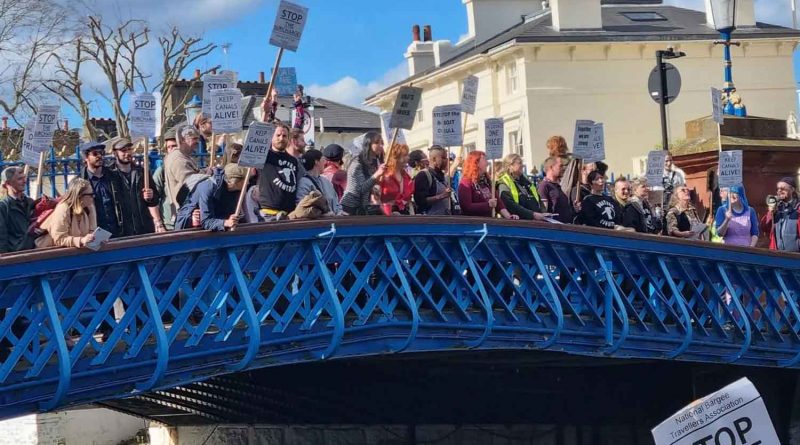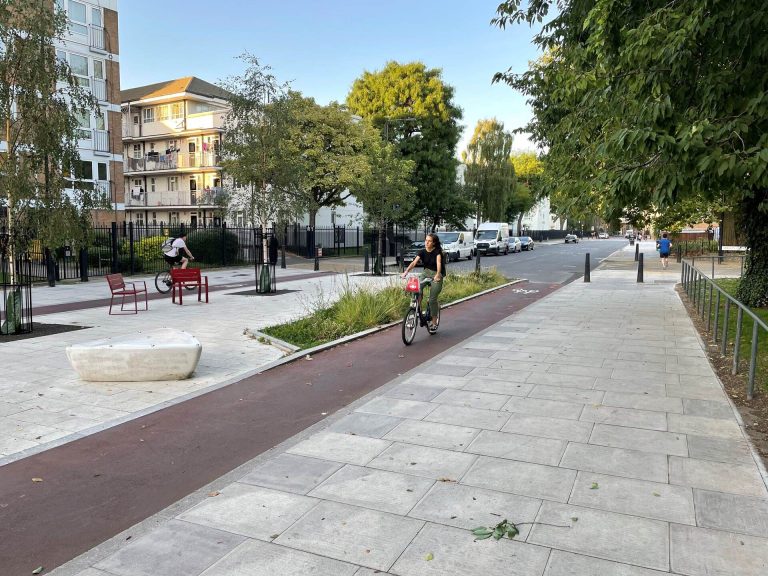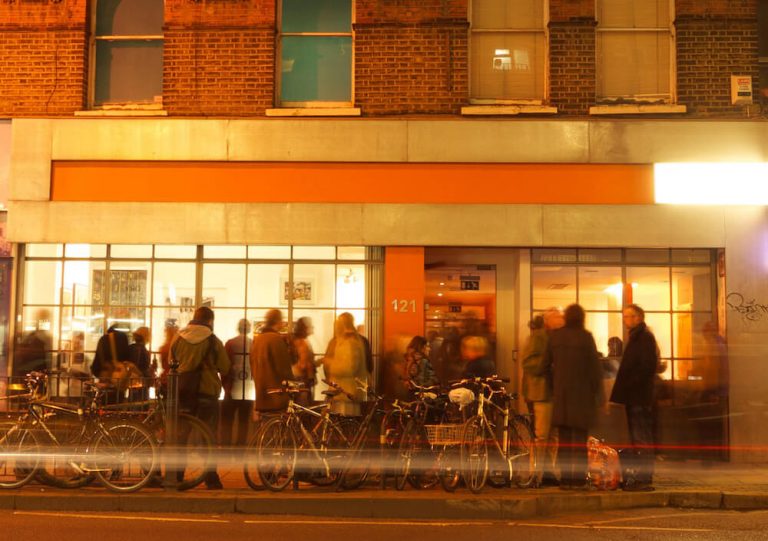Houseboaters in East London face being priced off the canals following Canal and River Trust’s dramatic fee hike
Fee hikes introduced by the Canal and River Trust to improve our waterways are threatening to price out a vital source of affordable housing for key workers.
With rent at a record high, it’s harder than ever to find an affordable place to call home in our capital. For low-income Londoners, living nomadically aboard a houseboat once offered a viable alternative. But as of April this year, itinerant boat dwellers face being priced out of their floating homes.
We see various kinds of houseboats lining the Regent’s Canal. Some have a permanent mooring – which can cost as much as rent – allowing boaters the security of remaining in the same spot indefinitely for up to 12 months.
Other boaters – known as continuous cruisers – don’t pay a mooring fee. As long as they move on every 14 days, these nomadic boaters only have to pay their licence fee, costing on average £1,000 a year.
But on 19 September 2023, the Canal and River Trust (CRT) announced a new structure of boat licence pricing, introducing a surcharge of up to 75% for continuous cruisers from April 2024.
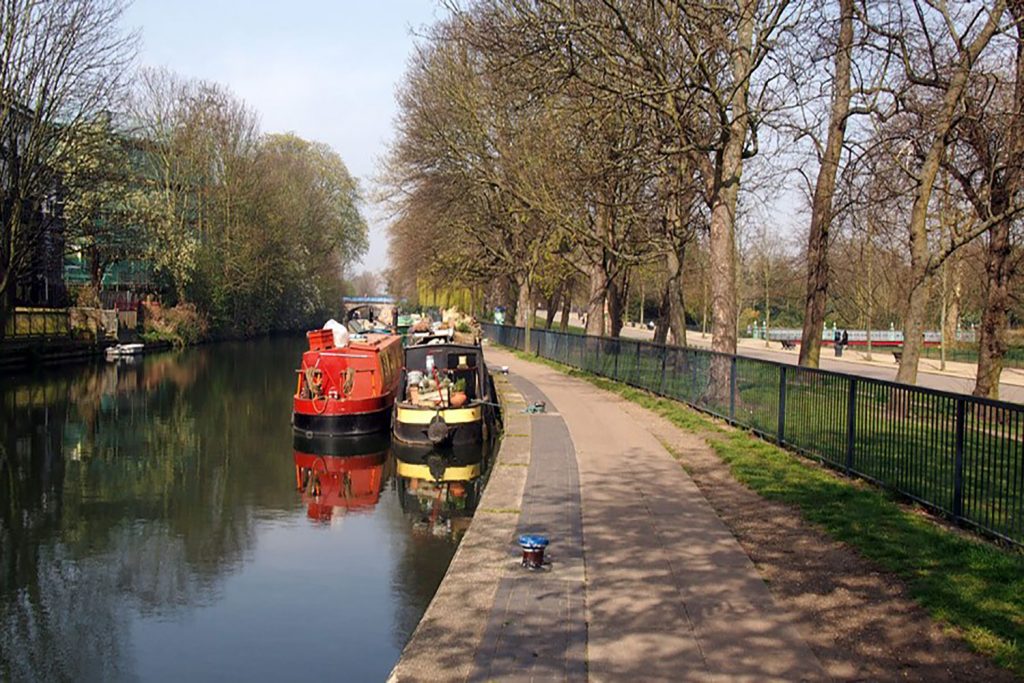
‘It’s going to push a lot of people onto benefits, it’s going to make a lot of people homeless, it’s shocking from the CRT,’ said Toby Osmond, a self-employed actor currently based on the Regent’s Canal near Globe Town.
Previously appearing in Game of Thrones, he’s now re-training as a construction worker to balance the fees. ‘It will drive people onto the streets and into council housing, so the government should be paying attention,’ he said.
The fee hike is pertinent, targeting a community who have opted for the nomadic way of life because there’s no other viable way of living in London.
The lifestyle yields other benefits allowing boaters the freedom to roam England and Wales’ vast waterways. But for those on a low income or unable to work full-time because of a health condition or a caring commitment, continuous cruising is one of the few ways people can afford to live in the capital.
Continuous cruisers are a minority in the boating community, making up one-fifth of the 35,000 licensed boaters in the UK. Around 36% of them are based in London.
Alain Gough-Olaya is a 38-year-old continuous cruiser currently based in Hackney Wick. As a mental health nurse, being a nomadic boater is the only way he can afford to stay in London.
‘For the last eight years, this boat has provided quite a lot of breathing room for me, which has meant that I haven’t ended up in crippling debt and I’ve had a secure place,’ he said. ‘It’s created a lot of stability, but I’m worried it’ll be taken away.’
Gough-Olaya’s partner has long-term health problems, meaning he might become the sole income earner if her condition takes a turn for the worse. ‘It is distressing,’ he said. ‘At some point, she may just not be able to work, there may be issues where suddenly she’ll have to undergo surgery – potentially months where she’ll be very unwell.’
He worries that the surcharge is just the tip of the iceberg. ‘They’ve singled us out, and it’s a slippery slope.’ He fears the CRT will continue hiking the fee, eventually pricing continuous cruisers off the waterways for good.
For continuous cruisers in boats under 2.16m, the surcharge is 25%, staggered annually in 5% increments culminating in April 2028. Continuous cruisers in wide-beam boats over 2.16m will face a 50% surcharge, while those in boats over 3.24m will see fee hikes of 75%.
The fee hikes do not come out of nowhere. Faced with a £300m cut in government funding by 2027, the CRT is scrambling to stay afloat and prevent the devastating prospect of canal closures. There are more boats on the waterways than at the height of the Industrial Revolution, putting more pressure than ever on the 250-year-old infrastructure.
The surcharge is just one of the CRT’s latest attempts to manage its alarming financial situation. Licence fees make up 11% of its revenue, so increasing them is a way to offset the cut in public funding.
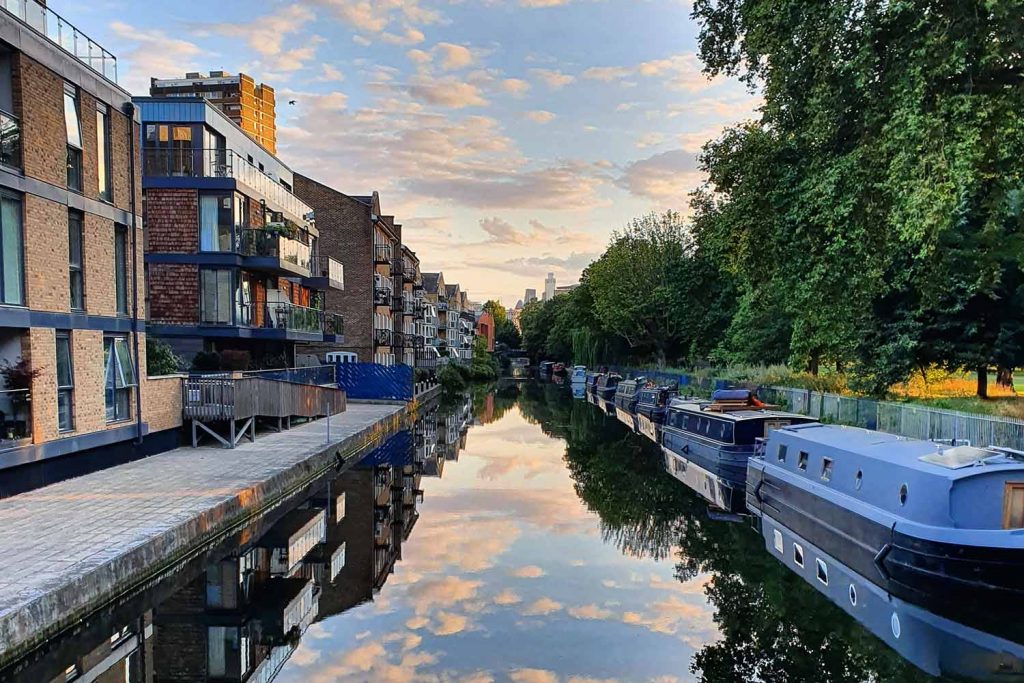
According to the CRT, continuous cruisers use the canal network the most, thus it makes sense to charge them a higher fee. A CRT spokesperson said:
‘As a charity, it is our mission to keep canals safe and open for boating, wildlife, and local communities.
‘But these historic routes face a constant battle against the elements and the wear and tear of time. As the cost of looking after these heritage routes spirals, we must raise money from all sources.
‘Boats are central to the network, and we try to keep their contribution affordable. We are, however, asking those with wider boats and those who use the network most to pay more. This contribution will help fight the battle to keep canals open and ensure this wonderful canal network is here for boaters and others to use.’
However continuous cruisers feel singled out by the surcharge. The CRT’s claim that they use ‘the network most’ implies they are an inconvenience for simply using the waterways they pay for.
The people who it’s going to hit the hardest are the poorest boaters, there are a lot of people who would be on the streets if they weren’t on their boats. People are living on them because they haven’t got another option.
toby osmond
Osmond, is a continuous cruiser on a 12-foot wide-beam boat, so he is facing the 75% surcharge on top of the 6% rise in licence fees.
‘When I first got on the rivers, my licence plus insurance was less than a grand for the entire year. Now, it’s closer to that for a six-month licence by itself. It’s crazy,’ he said.
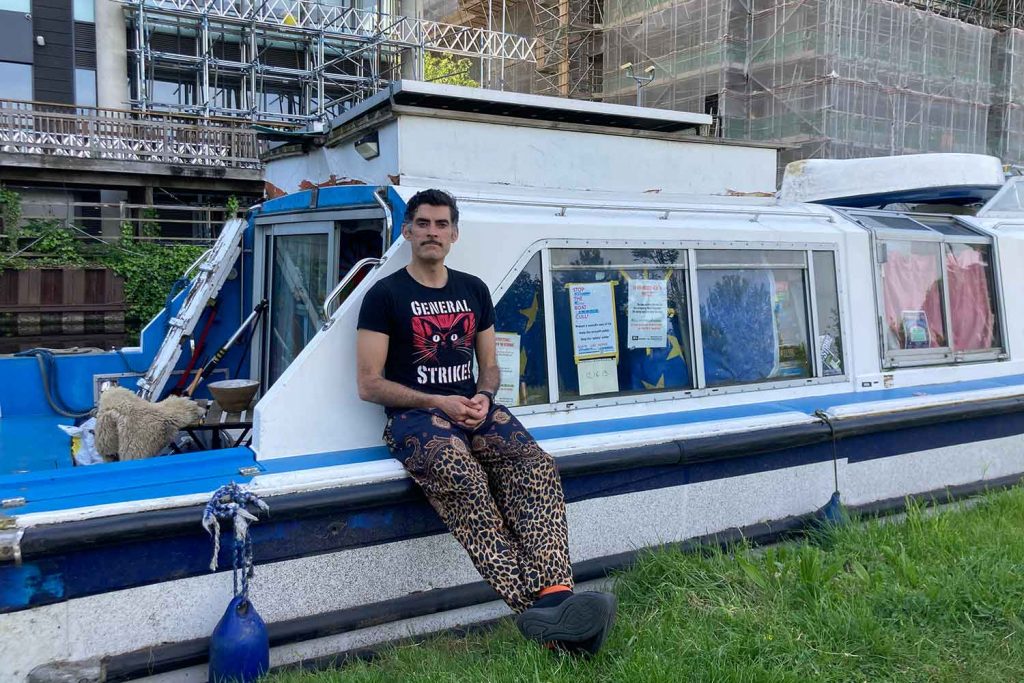
‘The CRT is weaponising licences, they want to price out everyone who hasn’t got a super posh, £100,000-plus boat.’
For Osmond, the CRT’s policies are especially sinister considering how most of the nomadic boaters he knows are employed in the charity sector or volunteers, and unable to match the fee hike.
‘The people who it’s going to hit the hardest are the poorest boaters, there are a lot of people who would be on the streets if they weren’t on their boats,’ he said. ‘You see these very small, little 20-foot long fibreglass boats, six-foot wide, tiny little things. People are living on them because they haven’t got another option.’
He adds: ‘Maybe they bought it for £500, I know there are a lot of people on the river who have been given boats by people, just so they don’t have to be on the streets. It’s their shelter.’
Gough-Olaya shares a similar sentiment. ‘Continuous cruisers are a very diverse group of people, but the majority who I meet are in a lower economic bracket. There are a lot of artists, musicians, and carers – people who would not be able to live London without this set-up.’
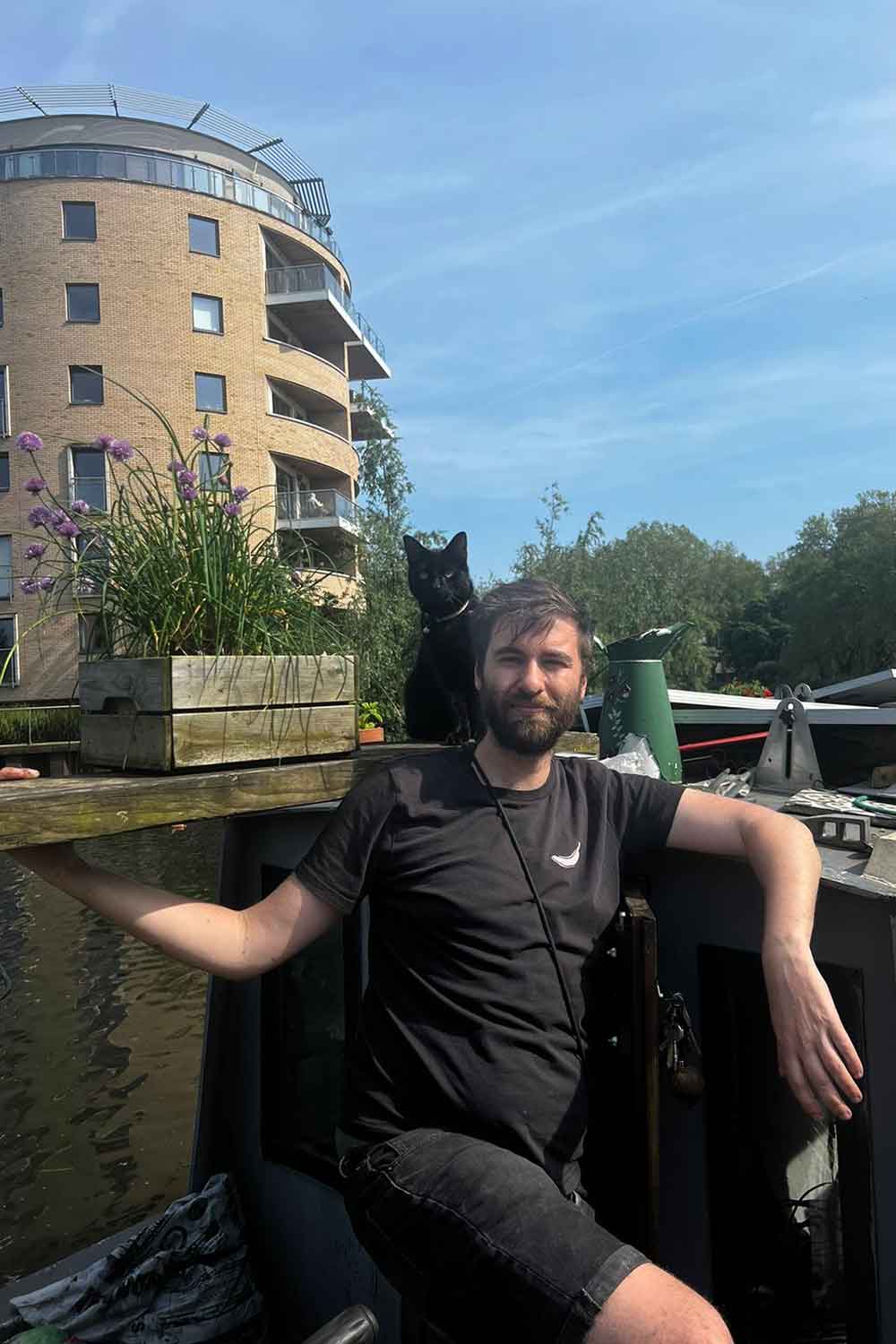
Osmond and Gough-Olaya are members of The National Bargee Travellers Association (NBTA), a volunteer organisation representing continuous cruisers which is staunchly opposing the surcharge.
The group has organised protests in Birmingham and Paddington attracting hundreds of boaters and has said it will support continuous cruisers if they participate in a licence strike. On 6 May 2024, the NBTA launched a petition calling for the scrapping of the surcharge, gathering 416 signatures in two weeks.
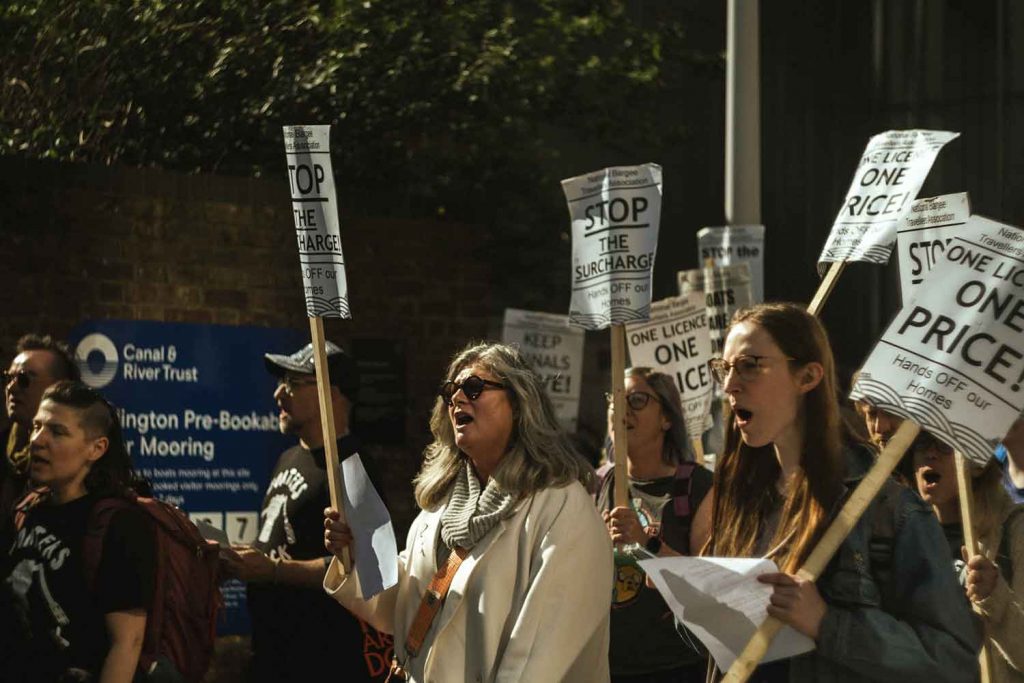
It’s not just the surcharge making life more difficult for continuous cruisers in London. The CRT has begun charging boaters for staying on previously free moorings across the capital, adding to the financial burden of boaters already dealing with the fee hike and the surcharge.
As a way of managing increased demand for London’s waterways, mooring spaces in Little Venice, Paddington, Camden, Kings Cross and Islington will now cost between £25 – £35 a night. New sites at Broadway Market, Victoria Park, Cowley North and Kensal Green will be phased in throughout the year.
According to the CRT, these ‘pre-bookable’ moorings are necessary, allowing boaters travelling to the busy capital the assurance that there will be a place to stay.
But for Marnie Woodmeade, a 27-year-old boater cruising between Wembley and Enfield, the expensive moorings make life on the canals unworkable. She can’t afford £35 for a pit stop – ‘it’s as much as a hostel’ – so her journeys between East London and West London have become relentless.
‘Yesterday, we had to move from Camden – one of only four spots in Camden – all the way to the other side of Paddington, which is a two-hour trip. You can’t do that on a Tuesday afternoon if you’re working full-time, and it’s a lot of locks to do if you’re on your own,’ she said.
The scheme has meant continuous cruisers no longer moor at the previously free zones, transforming once bustling stretches of the canal into eerie ghost towns.
‘Kings Cross canal used to be dark and dangerous, but the boaters have made it safe to walk around at night,’ said Woodmeade. ‘Now, if I’m on my own walking to the boat, going past pre-bookable moorings, I don’t feel safe anymore because there’s no one around. It’s just me, the dark canal, and the dark night.’
For continuous cruisers like Woodmeade, Osmond and Gough-Olaya, the CRT’s surcharge feels like a punishment to a group who provide a huge service to the canals. From tackling crime to litter picking, nomadic boaters make our waterways clean and safe havens of community.
The surcharge also arrives at a particularly ironic time, when many boaters feel the CRT’s maintenance of the canals is at an all-time low. Several report overflowing bins, broken and leaking water taps, and the disappearance of pump outs – meaning boaters have nowhere to dispose of their sewage.
Agnes Tatar is a 43-year-old music teacher currently based in Tottenham Hale. Her licence fees have increased by about 20% since last year – a price she’d be willing to pay if she didn’t feel the service was crumbling apart.
She said: ‘Life in a boat is hard, but when services are literally falling apart, it really is impossible.
‘Very often, a pipe bursts, a tap doesn’t work, or toilet emptying points get blocked. Getting rid of rubbish is a constant problem, and it spurs people to do really stupid things, like dump their rubbish in disgusting ways.
‘It gives the CRT more of a reason to be aggressive towards us. But what would you do if you lived in a place where there were literally no rubbish bins? How far would you be willing to take your rubbish to get rid of it?’
According to the CRT, it spends around £2 million annually on boater facilities, and in recent years has developed four waste sites, seven water points, and three elsans (places to empty toilets) in London.
A spokesperson from the CRT said: ‘We’re continuing to investigate the feasibility of potential new or improved sites, with the aim of installing further facilities where possible. The challenge is that the Trust typically only owns the towpath, plus there are issues with vehicle access, and getting utilities like water supply to cross third-party land.
‘Facilities are certainly under pressure in London – the massive increase in boat numbers has put an unprecedented amount of pressure on the system (more boats using them means they get full quicker and are at more risk of breaking down – plus some sites sadly face the challenges of fly-tipping and vandalism).’
Confronted with a financial crisis, an outcry from a vulnerable community, and ever-increasing demand for the canals, the CRT stands at a pivotal juncture.
Only the future will reveal whether the charity can address its financial situation and preserve the waterways without displacing nomadic travellers from their homes.
But in the meantime, continuous cruisers will fight to protect their way of life. Itinerant boaters may be a minority group, but the community is steadfast in its mission to resist the surcharge and stay on the canals.
If you enjoyed this article, read From failure to fame, murder to mooring; the untold history of Hertford Union Canal

